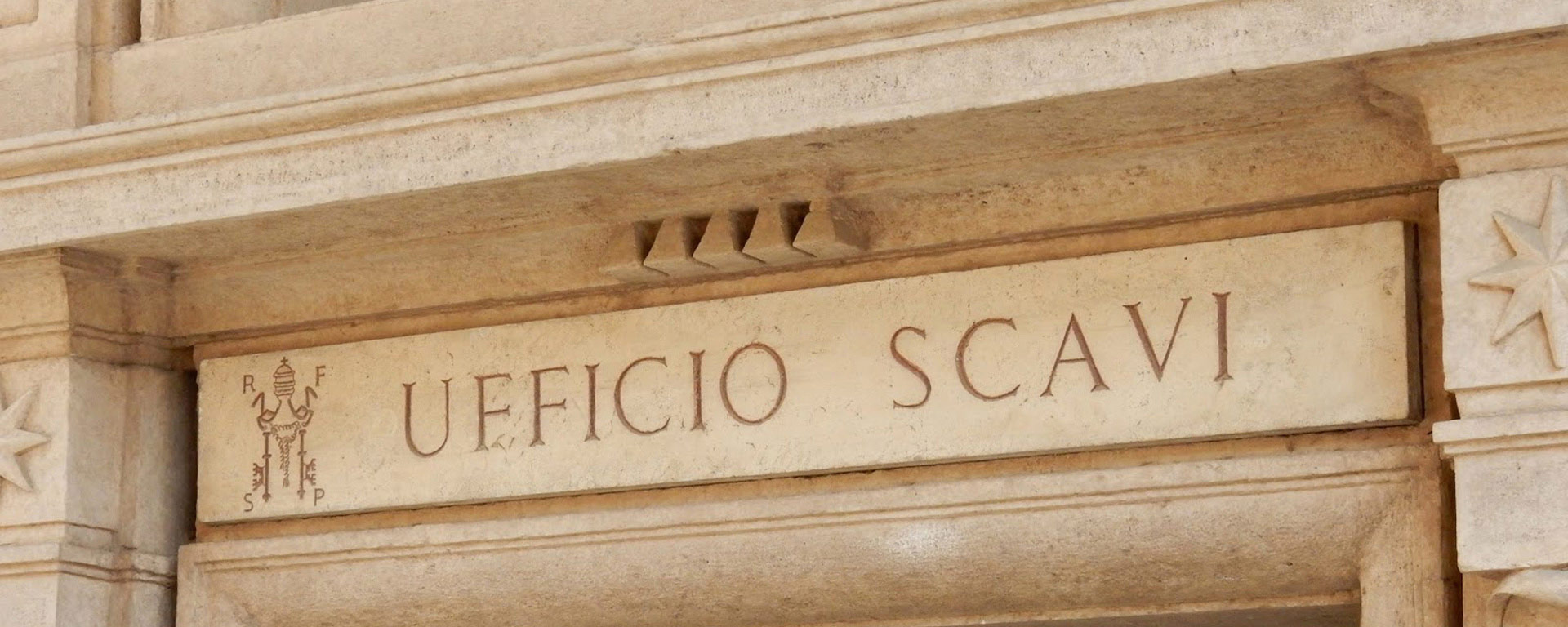
Vatican Necropolis
The Vatican Necropolis, or city of the dead, lies two stories beneath the floor of St. Peter’s Basilica.
It is the original ground level of Vatican Hill and is part of the cemetery that Saint Peter is believed to have been buried in.
tomb of st peter
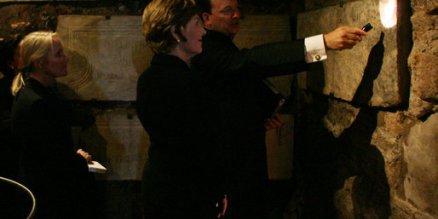 Saint Peter, Simon bar Jonah, was crucified here in Nero’s circus or chariot racing track after the emperor blamed the Christians for starting the fire of Rome of 64 AD.
Saint Peter, Simon bar Jonah, was crucified here in Nero’s circus or chariot racing track after the emperor blamed the Christians for starting the fire of Rome of 64 AD.
Peter had been preaching in the Empire’s capital, which would have given him him the largest audience.
st peter’s bones
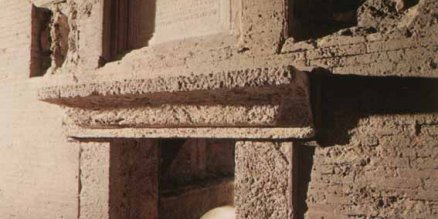 Crucified upside down beside the obelisk, which now sits in the middle of St. Peter’s Square, the Christians removed him from the cross and buried him in a neighbouring cemetery in accordance with Jewish burial customs.
Crucified upside down beside the obelisk, which now sits in the middle of St. Peter’s Square, the Christians removed him from the cross and buried him in a neighbouring cemetery in accordance with Jewish burial customs.
st peters tomb
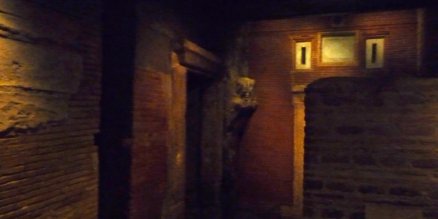 A simple inscription “Petros Eni”, or Peter Lies Within in Greek, was inscribed above his grave so the small Christian Community would know where his remains were.
A simple inscription “Petros Eni”, or Peter Lies Within in Greek, was inscribed above his grave so the small Christian Community would know where his remains were.
The early Christian community used Greek which was the practical language of the Eastern Roman Empire where Peter was from.
vatican grottoes
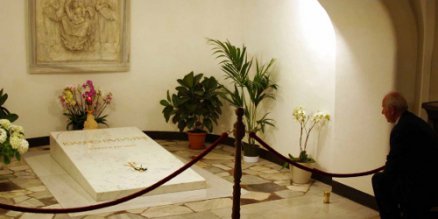 The Gospels were also written in Greek or Koine as Hellenised Jews and gentiles (non-Jews) would not have understood Hebrew (official written Jewish) or Aramaic (colloquial spoken Jewish).
The Gospels were also written in Greek or Koine as Hellenised Jews and gentiles (non-Jews) would not have understood Hebrew (official written Jewish) or Aramaic (colloquial spoken Jewish).
Greek had been the Lingua Franca or main language of the region since Alexander the Great of Macedon conquered the region almost four hundred years previously.
Greek was easier to translate in to Latin which was the official language used in the West.
where is st peter buried
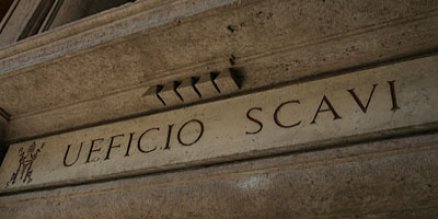 Over time many Christians chose to be buried near the grave of the man regarded as the Chief Apostle.
Over time many Christians chose to be buried near the grave of the man regarded as the Chief Apostle.
As the tombs of Jesus and Mary were unknown and/or unoccupied, Peter’s tomb became one of the holiest sites in Christendom alongside the Church of the Holy Sepulchre in Jerusalem.
peter pope
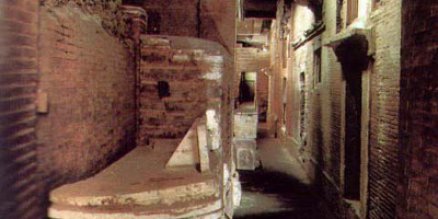 Written sources from the first century refer to Peter being crucified.
Written sources from the first century refer to Peter being crucified.
The Roman writer Tacitus documents the persecution of Christians under Nero, of whom he was a contemporary, and John’s Gospel, written after the fire, records Jesus as telling Peter “when you are old you will stretch out your hands, and another will dress you and take you where you do not want to go” [Jn 21:18].
Stretching out your hands is considered a direct reference to crucifixion.
necropolis vatican
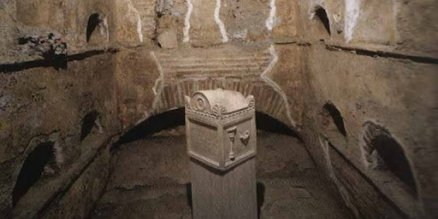 Tertullian and Origin, writing in the 2nd and 3rd centuries, tell of Peter’s “passion” and “crucifixion” in Rome, upside down at his own behest; he felt he was not worthy of emulating Jesus in any way.
Tertullian and Origin, writing in the 2nd and 3rd centuries, tell of Peter’s “passion” and “crucifixion” in Rome, upside down at his own behest; he felt he was not worthy of emulating Jesus in any way.
The Roman writer Josephus, from the first century, also tells us that Roman soldiers liked crucifying their victims in different ways, so they would have accommodated Peter’s request.
old st peter’s basilica
In 326 A.D. the Roman Emperor Constantine built his Basilica or Church on this site with the altar right over Peter’s grave.
Most of the non-Christian tombs were cleared and cemetery was discontinued. Constantine’s Basilica lasted 1200 years until it was gradually replaced by the current basilica (1506 – 1626).
Carlo Maderno, the second last architect of the Basilica, created the current layout of the levels, with the Papal Tombs one story above the necropolis and the Basilica floor above that.
In the 1940s Pope Pius XII ordered excavations carried out on the necropolis around the area of the tomb.
These excavations revealed many pagan tombs in the vicinity of Peter proving the written source material that the cemetery on Vatican Hill, where Peter is recorded as buried, was indeed pagan.
Digging twenty years later, during the tenure of Pope Paul VI, about 250 bones were found beneath the altar, piled together, interestingly without a skull.
Tradition records that Peter’s skull is actually in the church of Saint John the Lateran and was taken there to avoid it being damaged by the Saracens, or Muslim pirates, when they sacked Rome in the ninth century.
The Pope’s personal physician and a team of doctors confirmed these bones as those of a sixty to seventy year old man who had been powerfully built.
The bones match of the age of Peter and the written location of his burial.
st peter’s grave
Visits to the Scavi Necropolis can only be organised through the Ufficio Scavi with the Vatican themselves, they have their own tour guides, and you should book at least two months in advance to avoid disappointment.
Photographs are not permitted, and thus I do not have many above. Here is the Vatican’s site about the Scavi.
As the Scavi are underground, it is not suited to those without full use of their lungs, so children must be older than 16 and people with breathing conditions asthma or anything more severe should not attempt to visit the necropolis.
Also the area of the scavi are close quarters, if you have claustrophobia or dislike cramped conditions, the scavi are not for you.
As the Necropolis is a holy place, cameras are not permitted. Small bags, messenger bags and ladies handbags are permitted.
You should dress conservatively with covered knees and shoulders and you should wear comfortable shoes, tennis shoes, sneakers or trainers etc.
| Vatican Info |
|---|
| Vatican Home |
| Where is Vatican City |
| Vatican City Map |
| Parts of the Vatican |
|---|
| Vatican Museums |
| Pinacoteca |
| Raphael Rooms |
| Sistine Chapel |
| St. Peters Basilica |
| St. Peters Square |
| St. Peters Dome |
| Papal Tombs |
| Vatican Gardens |
| Scavi Necropolis |
| Vatican Tour |
|---|
| Vatican Tour |
| Vatican Transport |
| Tours Reviews |
| My Vatican Tour Details |
|---|
| Skip the Line Tickets |
| Sistine Chapel & St. Peters |
| Bathroom & Coffee Breaks |
| English Speaking Guides |
| Book Now |
Rated 5.0/5 based on a selection 10 customer reviews out of thousands.
